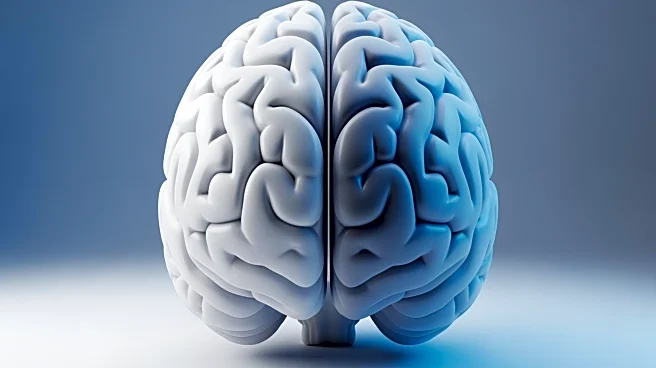What's Happening?
A recent study has investigated the potential of cortical thickness asymmetry as a biomarker for autism spectrum disorder (ASD) and schizophrenia (SZ). Researchers employed a normative modeling approach to establish normative ranges for cortical thickness asymmetry index
(AI) using a training set of healthy subjects. The study aimed to quantify individual deviations from the normative median in a test set consisting of healthy controls, participants with ASD, and SZ. The findings revealed that there were no significant differences in whole brain AI deviance among the groups. However, the SZ group showed a higher average number of regions with significant deviations compared to healthy controls, although this difference had limited predictive diagnostic accuracy at the individual level. The study concluded that cortical thickness asymmetry may not be a reliable biomarker for ASD and SZ.
Why It's Important?
The study's findings are significant as they challenge the utility of cortical thickness asymmetry as a diagnostic tool for ASD and SZ. This has implications for the development of more accurate and reliable biomarkers in the field of mental health. The research highlights the need for further investigation into alternative methods for diagnosing these disorders, which could lead to improved treatment and management strategies. The study also underscores the complexity of ASD and SZ, suggesting that a multifaceted approach may be necessary to understand and diagnose these conditions effectively.
What's Next?
Future research may focus on exploring other potential biomarkers for ASD and SZ, as well as refining existing diagnostic tools to enhance their accuracy. Researchers might also investigate the underlying mechanisms that contribute to cortical thickness asymmetry and its relationship with these disorders. Additionally, there may be efforts to develop personalized treatment plans based on individual neuroanatomical profiles, which could improve outcomes for patients with ASD and SZ.
Beyond the Headlines
The study raises important questions about the ethical considerations of using neuroanatomical data for diagnostic purposes. It also highlights the cultural and societal implications of mental health diagnoses, particularly in terms of stigma and access to care. As the field of neuroscience continues to evolve, there may be broader discussions about the role of technology and data in shaping mental health treatment and policy.














